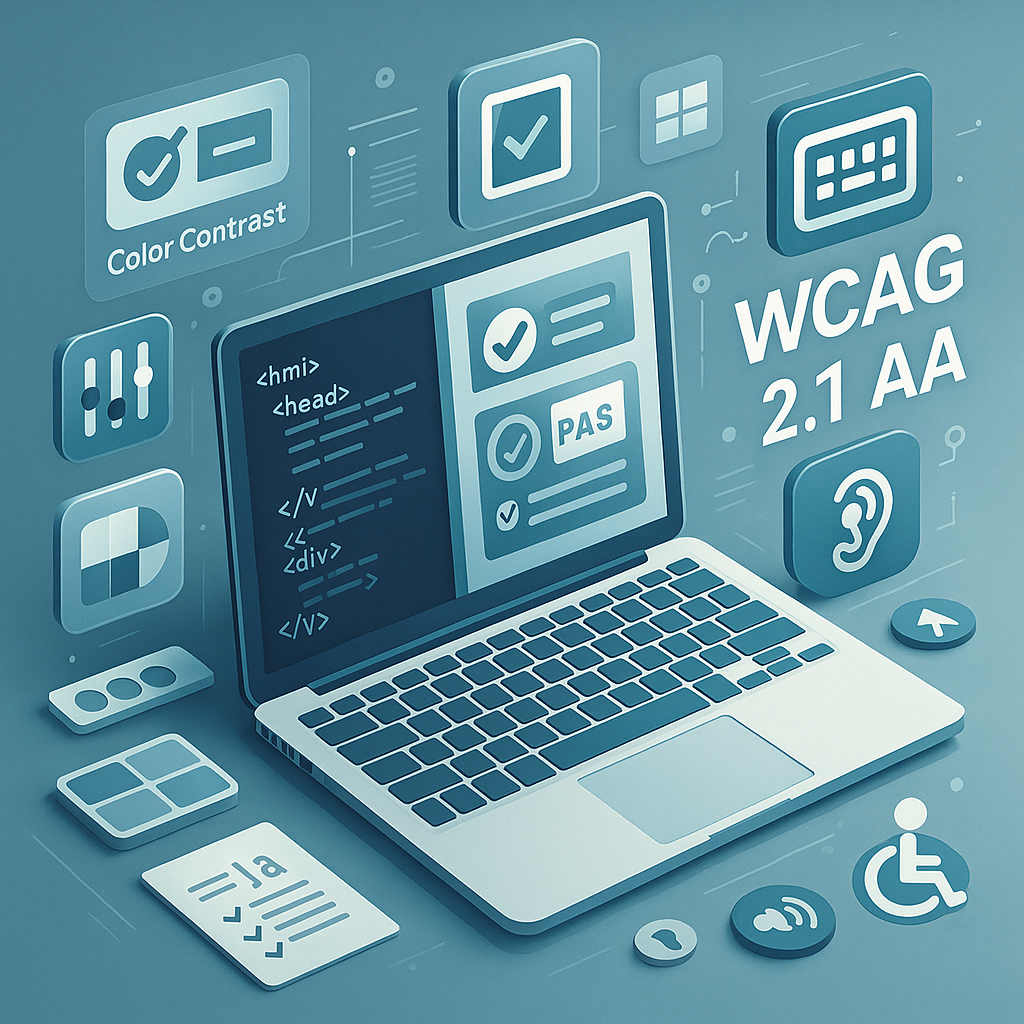Accessibility Compliance (WCAG 2.1 AA) – Why You Can’t Afford to Ignore It

You’ve probably heard the term accessibility compliance thrown around in tech and design circles, but what does it mean for you and your business? More importantly, why should you care?
If your website or application isn’t accessible, you could be excluding a huge portion of your potential audience, opening yourself up to legal risks, and damaging your brand’s reputation. And in 2025, accessibility isn’t just a nice-to-have—it’s an expectation.
Let’s break it down.
What Is Accessibility Compliance (WCAG 2.1 AA)?
Accessibility compliance is about making sure your digital products—websites, apps, and online services—can be used by everyone, including people with disabilities. The Web Content Accessibility Guidelines (WCAG) are the global standard for this, and 2.1 AA is the level most organisations aim to meet.
This level covers things like:
- Text alternatives for non-text content
- Sufficient contrast between text and background
- Making sure everything works with just a keyboard
- Ensuring your content is understandable and predictable
Why Do You Need It?
You need it because accessibility is about inclusion. If your digital presence isn’t usable for someone with vision, hearing, motor, or cognitive impairments, you’re effectively telling them they don’t matter.
From a business perspective, you’re also:
- Expanding your customer base by being accessible to everyone
- Reducing the risk of discrimination claims or lawsuits
- Building trust with your audience by showing you care
How Does WCAG 2.1 AA Affect Your Website or App?
Meeting WCAG 2.1 AA means looking at your design and development choices with accessibility in mind from day one. This could involve:
- Reviewing your colour palette for sufficient contrast
- Adding captions or transcripts for video and audio
- Making sure interactive elements are navigable without a mouse
- Testing with assistive technologies like screen readers
It’s not just about ticking a box. Accessibility has to be baked into your workflows.
Are There Tools to Help You Get There?
Absolutely. You don’t have to figure it all out manually—there are excellent online tools that can help you check and improve your accessibility compliance. Some popular ones include:
- WAVE Web Accessibility Evaluation Tool – highlights accessibility errors directly on your webpage.
- axe DevTools – a browser extension that scans your site for WCAG issues.
- Google Lighthouse – built into Chrome DevTools, it provides an accessibility score and recommendations.
- Accessibility Insights – a Microsoft tool for automated and guided accessibility checks.
- Color Contrast Checker – helps you ensure text and background colours meet WCAG contrast standards.
These tools are a great starting point, but remember—automated testing can only catch some issues. Manual reviews and real-world testing with assistive technologies are still essential.
Are There Newer WCAG Versions?
Yes! While WCAG 2.1 AA (published June 2018, updated May 2025) is still widely used, WCAG 2.2 AA was officially released in October 2023 and adds nine new success criteria. These focus on things like:
- Better keyboard focus visibility
- Larger touch targets for interactive elements
- Alternative methods for drag-and-drop
- Easier authentication without requiring memorisation
- Consistent help options across pages
The good news: if you meet WCAG 2.2 AA, you also meet WCAG 2.1 and 2.0 automatically.
Looking ahead, WCAG 3.0 is in working draft form and aims to replace WCAG 2.x eventually. It will broaden accessibility coverage for apps, publishing, and emerging technologies—but it’s not ready for conformance claims yet.
You can explore all versions and guidance on the official W3C Web Accessibility Initiative site: https://www.w3.org/WAI/standards-guidelines/wcag/
Is Compliance a One-Off Task?
Nope. Accessibility is an ongoing commitment. Every time you update your site, publish new content, or release a new feature, you need to make sure it still meets WCAG 2.1 AA standards. Regular audits and user testing are essential.
Why Does This Matter for Your Business?
Because in today’s digital-first world, your website is your front door. If it’s not accessible, you’re shutting that door on millions of potential customers.
Accessibility compliance isn’t just about avoiding penalties—it’s about doing the right thing and unlocking more opportunities. It improves user experience for everyone, strengthens your SEO, and positions your brand as ethical, forward-thinking, and user-focused.
If you want to future-proof your digital presence and show your customers you care, accessibility compliance should be at the top of your priority list.
At The Nerdy Cloud Guy, we help you build and maintain digital experiences that meet WCAG 2.1 AA standards—so you can focus on growing your business, not worrying about who might be left out.
